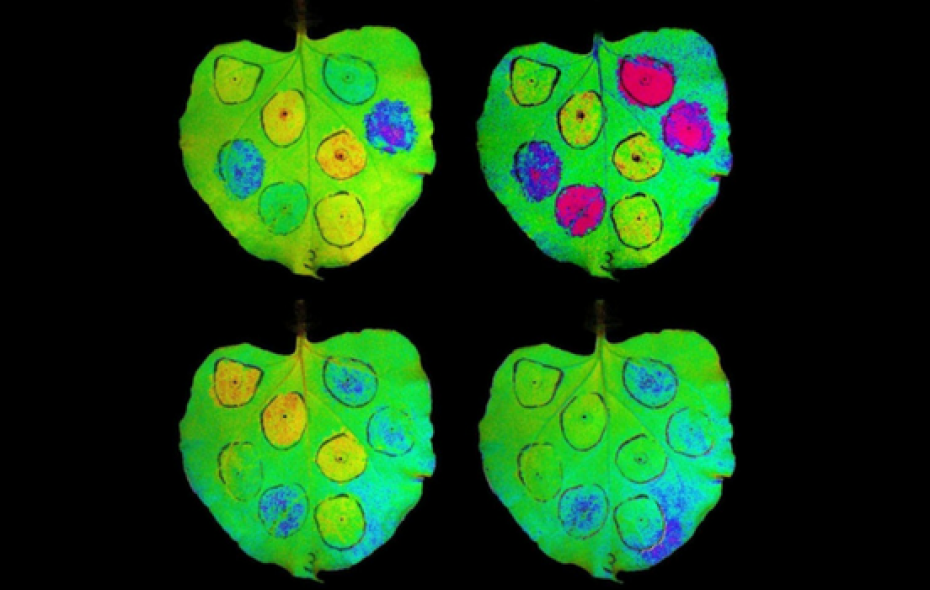
Plants get damaged by the sun just like people, and they protect themselves from sun damage by a process known as photoprotection, which includes the nonphotochemical quenching (NPQ) process. NPQ effectively acts as a sunscreen and stops the overproduction of damaging by-products of photosynthesis by turning excess light into heat. When there is too much sunlight NPQ allows the plant to get rid of the excess energy safely. In the shade, NPQ turns off, but there is a lag and this reduces the efficiency of photosynthesis. Time spent converting light into biomass is cut by up to 30%, reducing the amount of carbon dioxide turned into sugars. This is a particular challenge where there is intermittent shading from other plants in densely planted fields, or on days where there are passing clouds breaking up the sunlight.
Researchers from the US used engineering biology to boost the effect of three of the genes involved in NPQ in Nicotiana (tobacco) plants. They found that adding extra copies of these three genes accelerated interconversion of violaxanthin and zeaxanthin in the xanthophyll cycle, turning NPQ off more quickly. This resulted in an increase in carbon dioxide uptake, and the plants weighed 14-20% more after 22 days. The research was published in Science.
Researcher Krishna Niyogi of Lawrence Berkeley National Laboratory’s Division of Molecular Biophysics and Integrative Bioimaging pointed out the significance of this research, saying “the molecular processes we’re modifying are fundamental to plants that carry out photosynthesis”. This means that there is the potential for the same approach to increase yields in many crop plants. This is relevant as predictions from the Food and Agriculture Organization of the United Nations suggest food production will need to double by 2050 to meet increasing demand.
However, the regulatory landscape remains a bottleneck. Recent clarification of the status of some forms of CRISPR based trait engineering in the US may help here given the three genes at least are cisgenic and given this avoids introducing genetic material from another species has a reduced regulatory burden. Nevertheless, it is less clear whether the potential for increased yields will help allay concerns around GM crops and if consumers, brands, regulators and scientists can reach a consensus on a viable route to market.